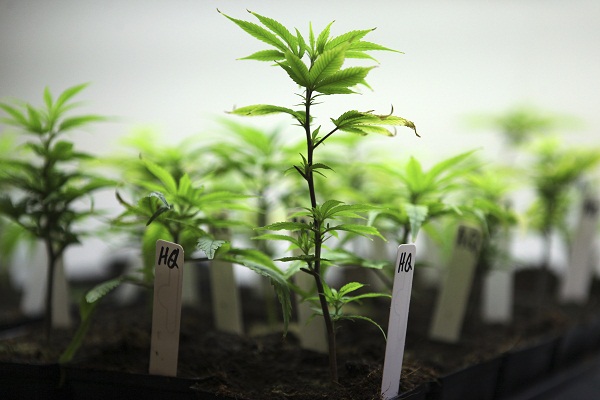If you are reading this article, the chances are high that you are just starting to embark on the very rewarding journey of becoming a cannabis cultivator, or that you’re very new to cultivation. Either way, learning how to clone cannabis is a great place to start.
Growing cannabis indoors or outdoors is one of the most worthwhile endeavors that someone can pursue. Whether you are cultivating cannabis for medical use, adult use, or just for the fun of it, trust that you are in for an amazing time because the cannabis plant is one of the most fun plants on Earth to cultivate.
Whereas many other plants take a very long time to show signs of new life, the cannabis plant, when cultivated properly, can grow very quickly and provide daily gratification. Plus, if you are cultivating cannabis for consumption, there is obviously a fantastic reward in the form of cannabis flower after the harvest is complete. However, before you get to the point of reaping that reward, you will first have to start at step one.
Starting from a cannabis seed is a good idea for those who have experience cultivating other plants from seed, and/or have time to get the seed to germinate and grow to the point when it can be transplanted. For those who want to speed up the process, using a cannabis clone is likely a better route. It’s also a much better route for ensuring that the plant is female.
What Is A Cannabis Clone?

For those who are new to cannabis cultivation, a cannabis “clone” is a genetically identical cutting from parent plants.
The process involves cutting a small branch from an already established cannabis plant, often referred to as a “mother plant,” getting it to establish its own root system, and thus become its own cannabis plant. It is important for beginner cannabis cultivators to know the process behind what goes into cloning a cannabis plant so that when they get a clone, they know what they are acquiring.
Also, it’s a great way to share cannabis genetics. If you find a cannabis cultivar you love and don’t want to see it go away post-harvest, cloning cannabis plants ensures your cultivar can stay around to be enjoyed again and again.
The Cloning Process
The first step in the cannabis cloning process is to locate a healthy parent plant. If you do not have one in your possession, you will need to find a kind friend who does. Be advised that you should only take clones from a mother plant that is in the vegetative or veg stage, not the flowering stage.
The next step is to find a branch on the cannabis plant that is suitable for cloning. Specifically, you will want to look for a branch that has new growth with at least a few sub-branches coming off of it.
You do not want to cut a branch that is too big and established because it will likely not become a rooted clone. Conversely, you do not want to cut a tiny branch because you want the eventual rooted clone to be strong enough to become a large, healthy plant. Look for a branch segment that is 8-10 inches long.
When you find a branch that is suitable, cut the branch off and make sure to not leave a ‘stub’ — make sure the cut is flush with the larger branch you’re removing it from, otherwise the original plant could experience branch rot.
From there, cut the base of the clone at a 45 degree angle. This will help increase the surface area of the inside of the clone’s base, which is important for the next process.
The next step, which should immediately follow the initial 45 degree angle cutting, is to dip the base of the clone in a rooting hormone. Rooting hormones can come in many forms including a cloning gel, a rooting powder, or a watery mixture. Read the directions on the label for best results, and cover as much of the exposed plant tissue with gel or powder as possible.
The rooting hormone will speed up the rooting process and result in the clone roots coming in faster and healthier.
From there, place the clone in a grow medium that you prefer and place it under low-intensity grow lights (that use CFL bulbs) until there’s a solid root base in 1-3 weeks. Rockwool cubes are a common medium, although there are others, including organic soil and “super soil.”
WHY CLONING IS COMMONPLACE IN CANNABIS
Cloning is a perfect way to produce the same type of plants without compromising on potency while keeping the same desired attributes. Plentiful harvest can be achieved through cloning as the clone shares the same genetic code of the mother plant.
First, growers must choose the right plant, i.e., a mature plant with specific criteria (smell, level of TCH, and so forth). The female plant is capable of producing up to 50 clones a week — making it a highly desirable harvest for cannabis producers.
The cloning process is referred to as being “asexual” as the cloned plant is grown from rooted cuttings from the mother plant. To clone the cannabis plant, growers should choose a mother plant that’s less than two months old for the greatest chances of success.
WHAT ARE THE ADVANTAGES OF CLONING?

For busy producers in quest of quality harvest and high yields with little effort, cloning their best performing cultivars present them with a myriad of benefits:
Speed: each clone has the same age as their parents, meaning they grow much quicker in comparison to their seeded counterparts. On top of it, cloned plants can grow faster for the first weeks.
Quality: Cannabis producers should respect the dosage of 10% less nitrogen before cutting the plants during the first weeks to permit sustainable growth. Producers can cut the desired leaves from the mother and grow them to get the clones with the same quality.
Inexpensive: cloning cannabis is a super cost-effective method compared to traditional ways of growing and harvesting cannabis. The process is fast and cheap — meaning producers can focus on growing their desired plants from the mother source and replicate them with clones.
CANNABIS CLONING METHODS
There are different cloning methods — or rooting mediums — for marijuana producers to achieve outstanding, high-quality clones.
The water method is the easiest of all and doesn’t require any rooting medium. Growers must cut the stalks of the plants and leave them in water with some plant food. While keeping sunlight indirect and preventing algae from occurring, cannabis growers can achieve desired clones.
The soil method involves putting the stalks of the plants into the soil — while ensuring the soil is not overwhelmed with nutrients. Some water should be added to the process. Most transplant clones can be transferred into the soil after 14 days on average.
The Rockwool method, also known as the non-soil equivalent, involves using rockwool cubes (or stone-wool cubes), which are used to germinate seeds. The cubes enable high water and air retention and should be placed away from the light.
FINAL NOTES ON CLONING CANNABIS PLANTS
Cloning for sex: producers clone only females, but there’s one more step to the process. Growers should keep away the plant from the light after 12 hours to start the flowering process and leave the plant in total darkness for up to 2 weeks. Then, they need to isolate males and females after the flowering stage and transplant only the female plants.
Viral infections following cloning: the mother plant can produce thousands of clones, yet generational clones may be prone to viral infections from time to time. This is due that the cloned seeds need to adapt to a new environment, despite being capable of fighting infections.
The likelihood of infections increases over time, so to prevent this from happening, cannabis growers should sample the original harvest to test the quality of the clones before doing any “mass production.”
Cloning is an effective way for marijuana producers to sample and replicate their top-performing cultivars for larger production. It’s an easy process with three types of methods and a quite cost-effective, therefore, could represent an excellent opportunity for producers to quickly grow and market their best products.
